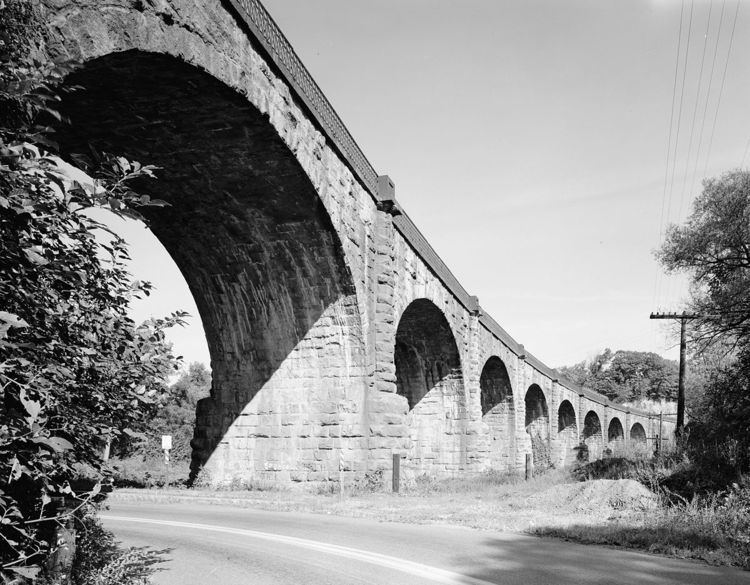Name Benjamin Latrobe, Role Civil engineer | Died October 19, 1878 Parents Benjamin Henry Latrobe | |
 | ||
Siblings John H. B. Latrobe, Lydia Latrobe Roosevelt Nephews Samuel Roosevelt, Ferdinand Claiborne Latrobe Uncles Christian Ignatius Latrobe Similar People Benjamin Henry Latrobe, Ferdinand Claiborne Latrobe, Albert Fink, Nicholas Roosevelt | ||
Benjamin Henry Latrobe II (December 19, 1806 – October 19, 1878) was an American civil engineer, best known for his railway bridges, and a railway executive.
Contents
Personal life
He was the son of Benjamin Henry Latrobe, second Architect of the Capitol who redesigned the re-built United States Capitol after the "Burning of Washington" by the British Army, during the War of 1812, in August 1814. The fire destroyed the Capitol and the President's House, along with most of the other public buildings in the two-decade old national capital and village. He was also responsible for the construction of the first Roman Catholic cathedral built in the United States, the old Baltimore Cathedral (later named the Basilica of the Assumption of Mary), 1806-1821.
The junior Latrobe was born in Philadelphia, Pennsylvania, and was educated in Baltimore, Maryland, and later at Georgetown College in Georgetown, D.C., just west of the new "Federal City", in the District of Columbia. He married Maria Eleanor "Ellen" Hazlehurst on March 12, 1833.
Charles Hazelhurst Latrobe (1834-1902), a son, became a Confederate veteran, a designer of bridges noted for their beauty.
Career
Around 1820, Latrobe worked with his father to establish a water supply for New Orleans, Louisiana.
He was hired on a surveyor crew for the Baltimore and Ohio Railroad (B&O) in the summer of 1830. In 1832, as assistant engineer, Latrobe surveyed and planned the route for the Washington Branch. For this route between Baltimore and Washington, D.C., he designed the Thomas Viaduct, which became the largest bridge in the United States when completed in 1835. The viaduct spans the Patapsco River between Relay and Elkridge, Maryland. He served as the project engineer and worked closely with the railroad's construction chief, Caspar Wever. Nicknamed "Latrobe's Folly" by those who doubted the massive structure could support itself, the bridge remains in use today (as of 2010), carrying far heavier loads than ever envisioned.
In 1835, he was appointed the chief engineer for the Baltimore and Port Deposit Railroad Company, which would help build the first rail link between Philadelphia and Baltimore.
Latrobe returned to the B&O in 1836. Along with Louis Wernwag, he designed the railroad's first bridge across the Potomac River at Harper's Ferry, West Virginia, which opened in 1837. In 1842, the B&O appointed him as Chief Engineer, succeeding his boss, Jonathan Knight. He served in the position for 22 years. He was appointed to the concurrent position of general superintendent of the B&O in 1847. He later became president of the Pittsburgh and Connellsville Railroad, part of the B&O's Pittsburgh District.
In the 1860s, Latrobe was a consulting engineer for the Troy and Greenfield Railroad, and worked on construction of the Hoosac Tunnel in Massachusetts, then the second-longest tunnel in the world.
Latrobe died in Baltimore on October 19, 1878.
